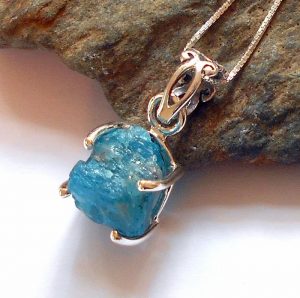The History and Uses of Apatite
Apatite’s name is derived from the Greek word “apatein,” which means to deceive or to be misleading. Throughout history it has been called the cheating stone because it is easily confused with beryl and tourmaline.
Moon rocks collected by astronauts during the Apollo program contain traces of apatite.
The color of apatite depends on the additional minerals in the area where the apatite gemstone grows. The most in demand color is the rich purple found in Maine at Mount Apatite. The second most sought after color is a brilliant blue color from Brazil. A neon blue-green variety has been mined in Madagascar.
For arthritis pain, hold one or more apatite crystals against the affected joint. This can help heal the pain and heal the joint faster. Apatite is n excellent stone for healing bones, cartilage, teeth and boosting calcium absorption. Apatite is composed of calcium phosphate, the same material that makes up teeth and bones.
To help lower high blood pressure, wear an apatite crystal hanging near your heart. It is supportive in healing all glands and organs, and reduces hypertension.
Apatite is associated with healthy eating, and has been credited with suppressing hunger and raising the metabolic rate. Apatite increases the willpower associated with resisting those foods that can lead to weight gain.
Shop all Apatite here
Want to know more about the history and legends behind gemstones? Grab my ebook Stories of the Stones here

earthegy on Facebook